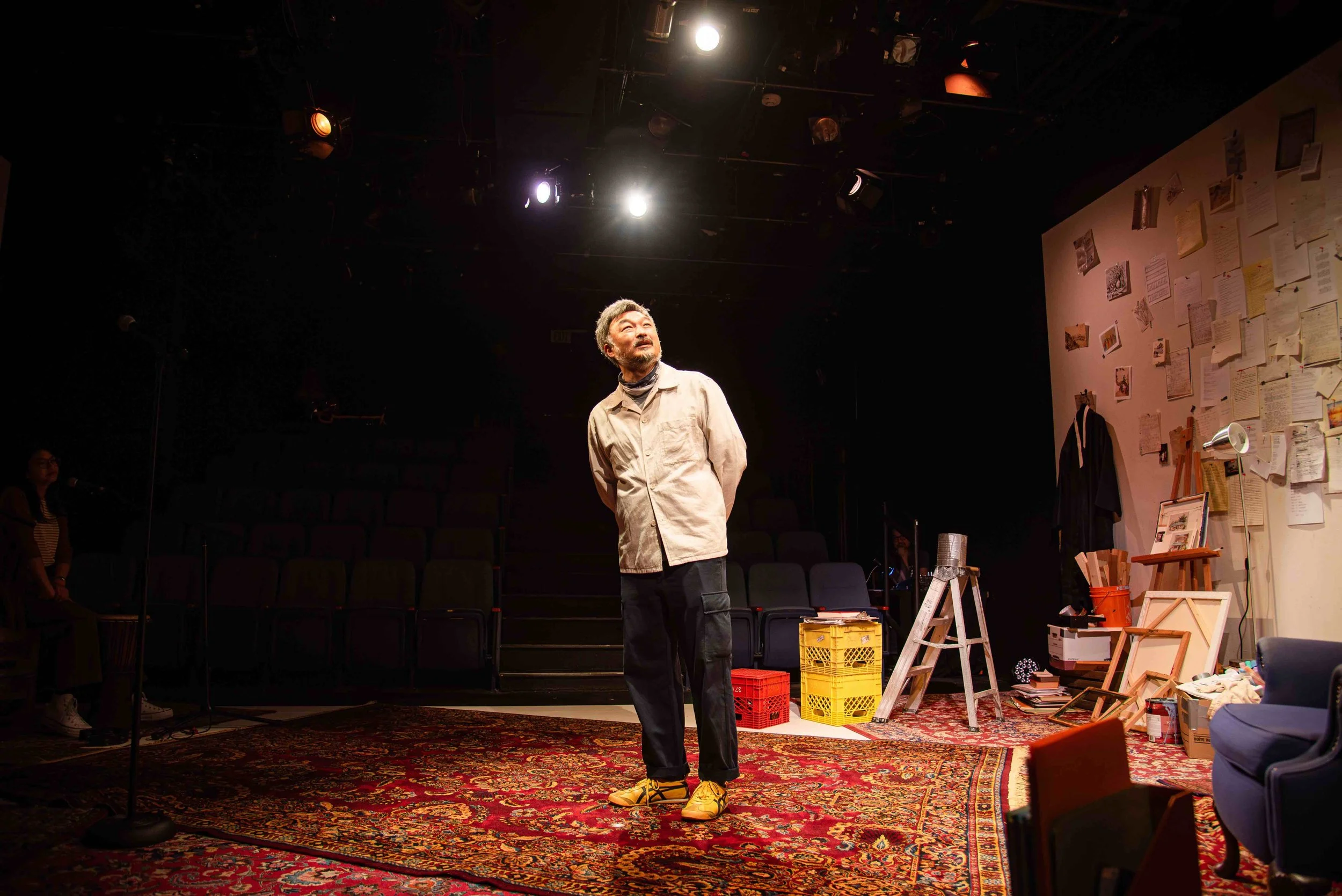Theatre review: Lasa Ng Imperyo (A Taste of Empire) delivers biting critique of the role of imperialism on the food we eat
The show by rice & beans theatre presented by PuSh Festival and Boca del Lupo moves swiftly with sharp satire
Lasa Ng Imperyo (A Taste of Empire). Photo by Emily Cooper
PuSh International Performing Arts Festival presents rice & beans theatre’s Lasa Ng Imperyo (A Taste of Empire) with Boca del Lupo at the Nest to February 8
“WHERE IS IMPERIALISM? Look at your plates when you eat. The imported grains of rice, corn, and millet—that is imperialism. Let’s not look any further.” These words from Burkinabè revolutionary leader Thomas Sankara hang over Lasa Ng Imperyo (A Taste of Empire). A theatrical experience that’s part cooking demo, part satire, and part slow-burning critique, the rice & beans theatre production, presented at PuSh Festival with Boca del Lupo, bitingly cuts through the links between food, power, labour, and the loaded histories that shape what ends up on our plates.
Bright lights, music, and a full-blown Netflix-esque food-reality show intro set us up to expect Chef Maximo, a fictional culinary celebrity with a food empire, including restaurant chains, kitchen appliances, and even fish-farming factories. He’s the kind of name in the same league as Gordon Ramsay or Guy Fieri. Instead, Chef Mela, his devoted apprentice, steps in for the night. She’s nervous, cracking jokes to fill the air and cheekily warning the audience there'll be no refunds.
With cameras capturing her every move, the sous-chef gets to work on rellenong bangus, or stuffed milkfish, a traditional Filipinx dish that’s as labour-intensive as it is delicious. She chops tomatoes, garlic, and onion for the stuffing, and she scrapes around the insides of the fish with a palette knife, one from Maximo’s own branded line, which she energetically plugs.
Performer Carmela Sison moves through the intricate prep in real time, while mixing quick, funny asides like the ad plugs with longer sections about the dish’s history. Tidbits about the ingredients themselves and the farms and factories they originate from begin to form a picture of how colonial modes of exploitation continue to permeate the stuff we eat. Chef Mela frequently exposes these truths offhandedly, with what sounds like admiration for her boss’s business savvy and an attempt to get the audience on board, which end up landing more like dark revelations.
The humour is sometimes sharp, sometimes as blunt as the mallet she uses to loosen the flesh of the fish. Jokes about kitchen culture and labour exploitation slip in casually, like Maximo locking her in a freezer for messing up or saying “sous chefs are like Chantilly cream: both have to be whipped.”
Sison’s script, adapted from Jovanni Sy’s A Taste of Empire, moves fast, layering critique on top of critique, touching on everything from fish farming and the displacement of traditional fishing to the health impacts of American colonial influences on Filipinx cuisine, the global roots of Spanish sofrito, or how Canada’s temporary foreign worker program fits into the mix. It’s a lot, but it stays engaging, carried by sharp satire. Most of it is delivered in Tagalog, with projected English subtitles.
The show, along with Sison’s charismatic performance, grounds big themes in Mela’s own complex relationship to her labour. The act of her cooking becomes an extended metaphor for the painstaking, often invisible work that holds up industries, cultures, and economies. And through it all, our protagonist wrestles with her own complicity—rationalizing Maximo’s cruelty, normalizing her conditions, buying into the idea that she should just be grateful to be here, even if, as she puts it, she’s the one footing the bill.
Lasa Ng Imperyo sizzles because of its intimacy, sharp framing, and bite-sized critiques. Giving away more would be like skipping to dessert before the main course. But rest assured, its final bite lingers. ![]()

























